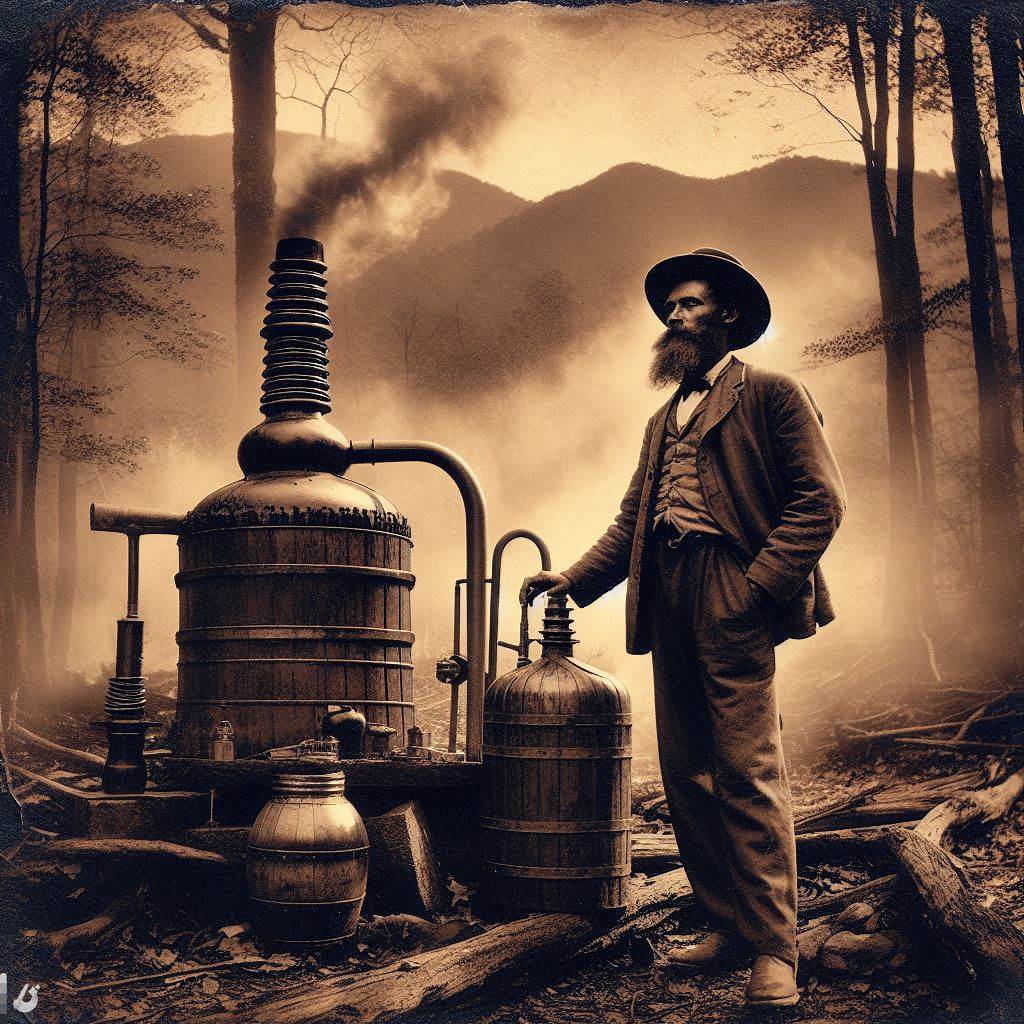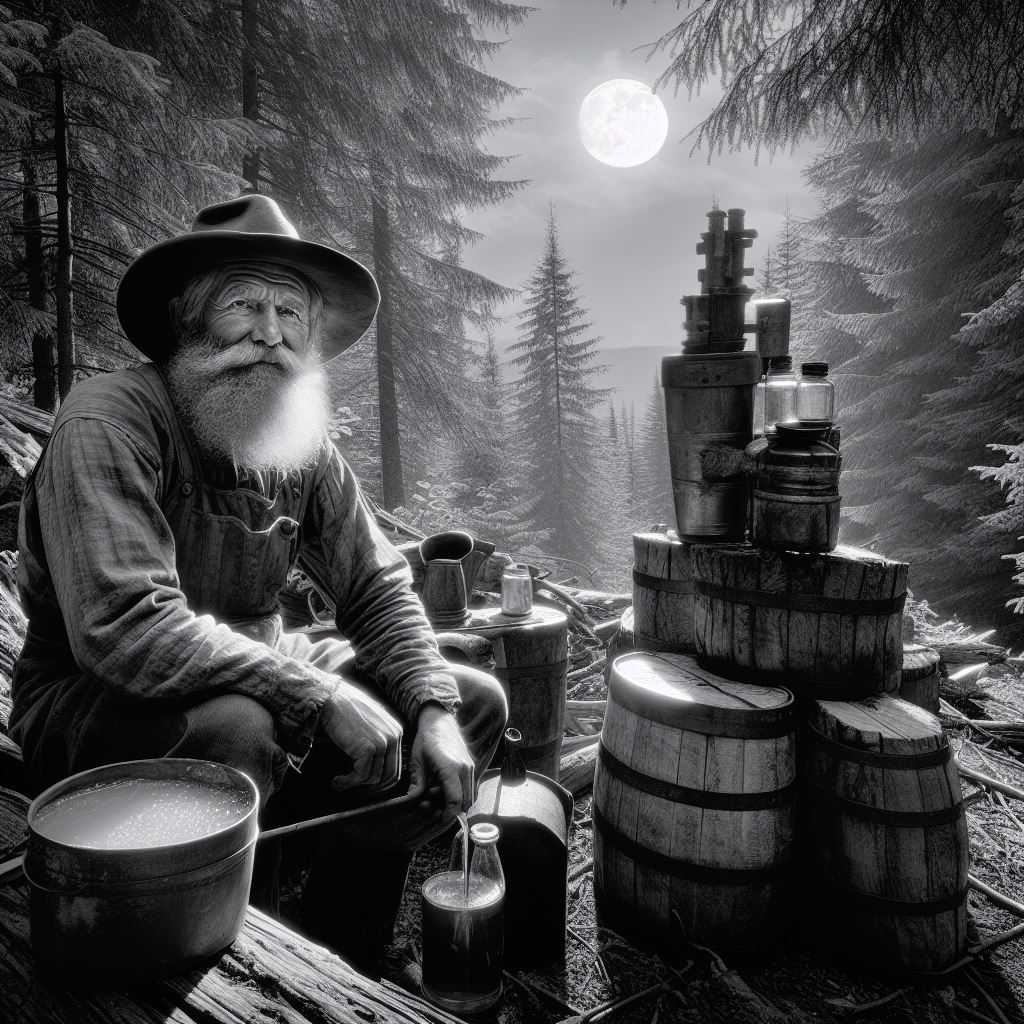
Prohibition and Moonshining in Cades Cove
Moonshining in Cades Cove During Prohibition
The years of prohibition in East Tennessee and Western North Carolina sparked resistance, with Cades Cove being no exception to illicit activities. Moonshiners took advantage of the clean flowing water and ample cover in the area to produce their infamous “White Lightning.”
Chestnut Flats: Moonshining Hub
Located near the base of Gregory Bald, Chestnut Flats gained notoriety for the quality of moonshine produced there. Among the well-known distillers was Josiah “Joe Banty” Gregory. However, this led to constant friction with the Primitive Baptist community in Cades Cove, staunch opponents of alcohol consumption. John W. Oliver, the local mail carrier, often discovered stills along his route and reported them to authorities. He strongly condemned moonshiners as not “Loyal Mountaineers” or “True American Citizens,” but rather as a menace to the cherished land of the Primitive Baptists.

Moonshining Clashes
In 1921, a raid on Gregory’s still by the Sheriff’s Department ignited a community battle. After the raid, arsonists set fire to the barns of William and John Oliver, causing substantial losses in livestock and tools. In retaliation, Asa and John Sparks assaulted Gregory’s son, prompting Gregory and his brother Dana to mount a counterattack. On Christmas night of 1921, the Gregory brothers pursued the Sparks brothers and shot them. Although Asa and John survived, the Gregorys were convicted of barn burning and felony assault, serving six months in prison before being pardoned by Governor Austin Peay.
The Decline of Moonshining
With the passage of the 21st amendment, moonshining gradually waned in mountain culture, including the Cades Cove area. Moonshining persists in the Cades Cove area, renowned for its high-quality moonshine products, defying complete disappearance. Today, this history adds a unique layer to the cultural heritage of the Great Smoky Mountains.
Explore the rich history and natural beauty of Cades Cove, where the legacy of moonshining during prohibition is intertwined with the region’s heritage.
Frequently Asked Questions (FAQs) – Moonshining in Cades Cove During Prohibition
1. What is moonshining?
- Moonshining refers to the illegal production of distilled spirits, often done secretly to evade government regulations and taxes. It was prevalent during the prohibition era when alcohol production and sale were banned.
2. Why was Cades Cove a hotspot for moonshining during prohibition?
- Cades Cove’s natural features, including clean flowing water and ample cover, made it an ideal location for moonshiners to produce illicit liquor. This led to a thriving moonshining community in the area.
3. Who were some notable moonshiners in Cades Cove?
- One well-known moonshiner was Josiah “Joe Banty” Gregory, who operated at Chestnut Flats. His moonshine was highly regarded for its quality, making him a prominent figure in the local moonshining scene.
4. How did the Primitive Baptist community in Cades Cove react to moonshining?
- The Primitive Baptists strongly opposed alcohol consumption, causing friction with the moonshining community. They considered moonshiners a scourge on their land and actively reported stills to the authorities.
5. Were there any conflicts or violence related to moonshining in Cades Cove?
- Yes, there were conflicts and violence related to moonshining. The raid on Josiah Gregory’s still in 1921 resulted in barn burnings and assaults. Gregory and his brother Dana also shot Asa and John Sparks in a reprisal attack.
6. Did moonshining continue after prohibition ended?
- While moonshining became less prominent with the repeal of prohibition, it did not disappear entirely. The tradition and craft of producing moonshine continue to be part of the cultural heritage of the Great Smoky Mountains region.